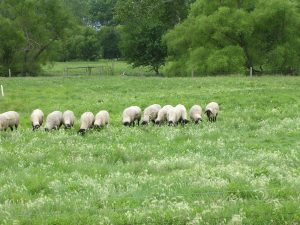Jim Johnson, soils and crop consultant, Noble Research Institute
(Previously published in Hay and Forage Grower: March 15, 2018)
Changing it up
Full disclosure — I am not an economist.  However, my premise is this: For various reasons, many growers would be economically better off growing a different forage than what they have always grown.
However, my premise is this: For various reasons, many growers would be economically better off growing a different forage than what they have always grown.
Growers, myself included, often dedicate time and energy to selecting the right variety and best management practices for a particular forage. But we seldom seem to stop and think about if that forage is the right one to grow. We often rationalize this action with statements like “This is what we’ve always done” or “We grow (insert your forage) because we grow (insert your forage).” Continue reading Forages and Change











